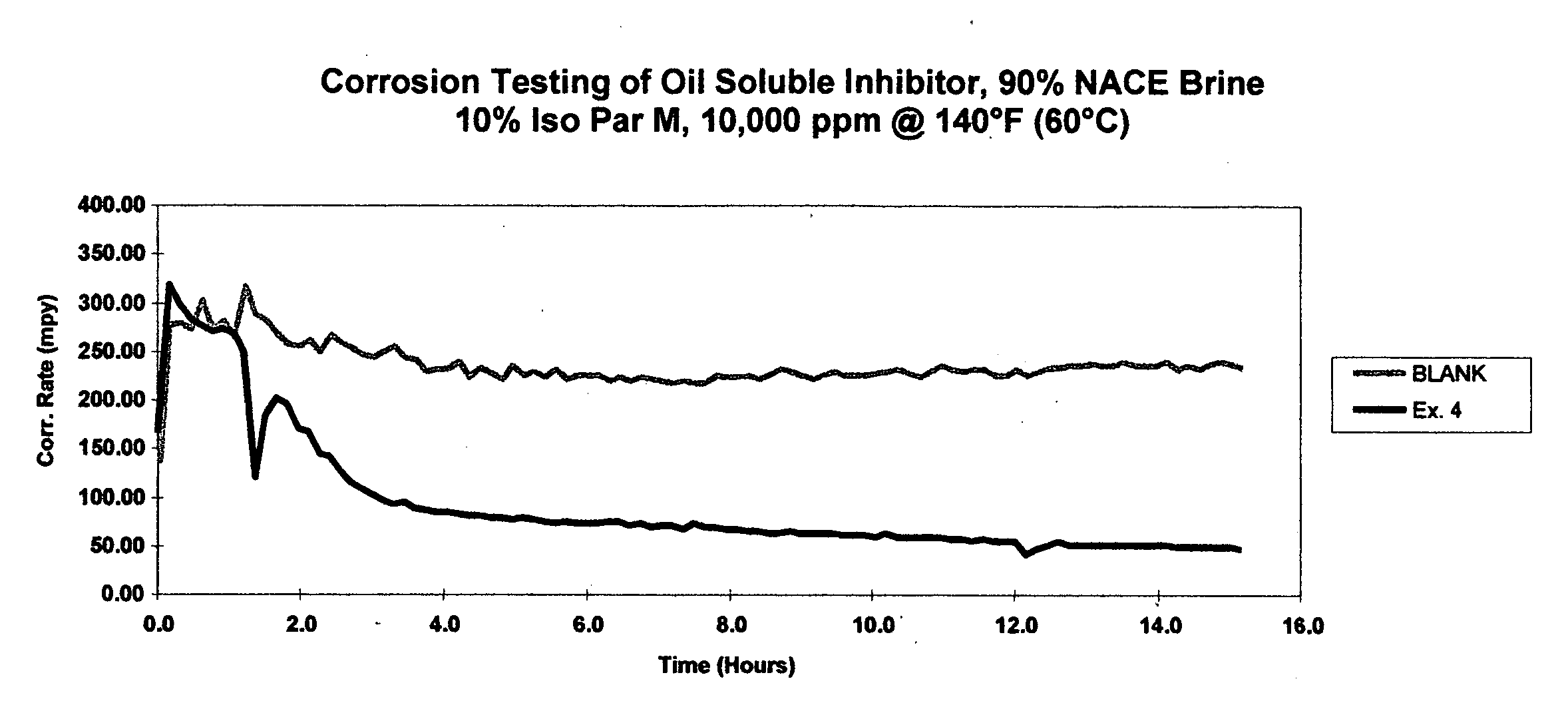Process and composition for lower toxicity quaternary ammonium compounds
a technology compositions, applied in the field can solve the problems of inhibiting the growth of biomass, affecting the toxicity of quaternary ammonium compounds, and restricting the discharge of water containing quaternary ammonium compounds, so as to reduce toxicity concerns
- Summary
- Abstract
- Description
- Claims
- Application Information
AI Technical Summary
Benefits of technology
Problems solved by technology
Method used
Image
Examples
example 1
A solution of 122.91 gm of Alfol 1214, 0.54 gm of p-toluenesulfonic acid monohydrate, 26.13 gm of bromoacetic acid, and 33.55 gm of chloroacetic acid was heated at 140° C. with stirring and sparged with a stream of nitrogen until the acid number of the mixture was below 3. The solution was then cooled to 65° C. and 114.84 gm of tributylamine is added. The solution was kept at 65° C. for 24 hours to give the end product as a clear amber liquid.
example 2
A mixture of 17.49 gm of trimethylolpropane, 171.06 gm of coconut oil, and 0.18 gm of methanesulfonic acid was heated with stirring under nitrogen for 3 hours at 140° C. to give a bright clear solution. To this solution were added 16.47 gm of bromoacetic acid and 22.41 gm of chloroacetic acid. The solution was stirred, sparged with nitrogen and heated at 140° C. until the acid number was below 3. The solution was cooled to 65° C. and 72.39 gm of tributylamine was added. The solution was kept at 65° C. for 24 hours to give the end product as a clear amber liquid.
example 3
Comparative toxicity analysis was conducted for the quaternary ammonium compound from Example 2 and for benzyldimethylcoco ammonium chloride, a commercial quaternary ammonium compound. Results from range-finding toxicity studies indicate that the Example 2 compound is less toxic to marine species as compared to benzyldimethylcoco ammonium chloride.
PUM
| Property | Measurement | Unit |
|---|---|---|
| temperature | aaaaa | aaaaa |
| temperature | aaaaa | aaaaa |
| affinity | aaaaa | aaaaa |
Abstract
Description
Claims
Application Information
 Login to View More
Login to View More - R&D
- Intellectual Property
- Life Sciences
- Materials
- Tech Scout
- Unparalleled Data Quality
- Higher Quality Content
- 60% Fewer Hallucinations
Browse by: Latest US Patents, China's latest patents, Technical Efficacy Thesaurus, Application Domain, Technology Topic, Popular Technical Reports.
© 2025 PatSnap. All rights reserved.Legal|Privacy policy|Modern Slavery Act Transparency Statement|Sitemap|About US| Contact US: help@patsnap.com



